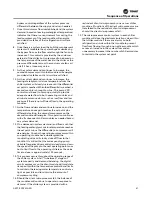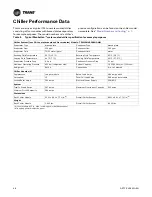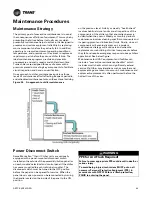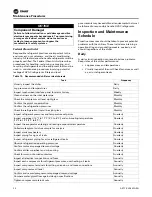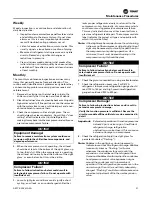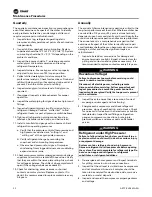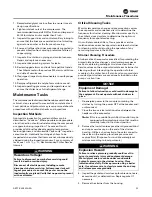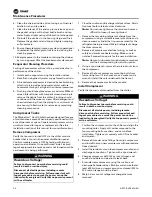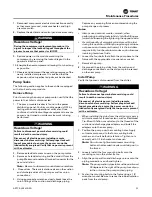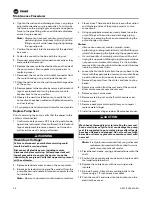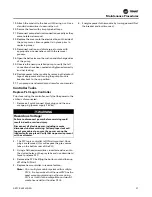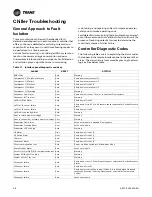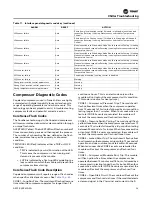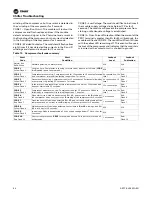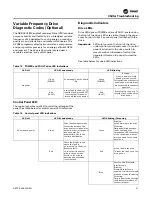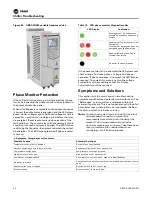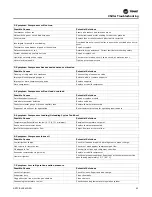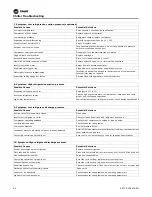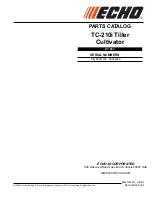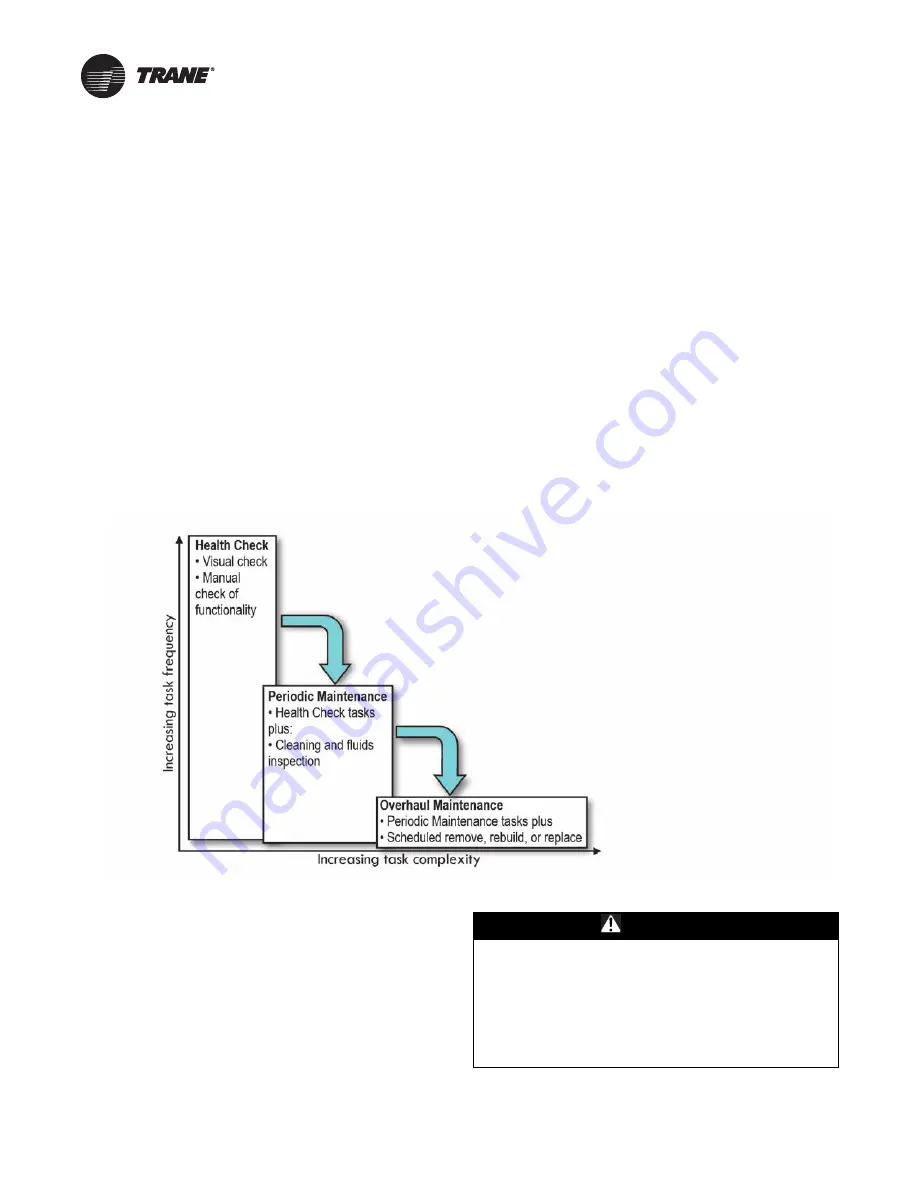
ARTC-SVX002A-EN
49
Maintenance Procedures
Maintenance Strategy
The primary goal of preventive maintenance is to avoid
the consequences of failure of equipment. This may be by
preventing the failure before it actually occurs which
preventive maintenance helps to achieve. It is designed to
preserve and restore equipment reliability by replacing
worn components before they actually fail. In addition,
operators can record equipment operating conditions,
temperatures, and pressures so they know to replace or
repair worn parts before they cause chiller failure. The
ideal maintenance program predicts and prevents
unnecessary and costly repairs and chiller down time.
Trane chillers are designed for ease of access with a
premium placed on locating key components to facilitate
visual inspection and hands-on verification.
One approach to chiller maintenance envisions three
levels of maintenance effort reflecting frequent, periodic,
and scheduled maintenance tasks, with each level building
on the previous level. A daily or weekly “health check”
involves habitual visual and manual inspections of the
components of the chiller so that anomalies become
evident when they occur. Weekly or monthly periodic
maintenance involves cleaning specific components and
inspecting glycol and lubrication fluids. Finally, since all
components will eventually wear out, a prudent
maintenance strategy will anticipate and schedule
replacement or rebuilding of critical components before
they fail and require emergency response to keep chillers
operational. See below figure.
Maintenance for HVAC equipment and facilities can
include a “preventive maintenance checklist” which
includes small checks which can significantly extend
service life. Other considerations such as weather and
equipment age are taken into account; maintenance and
equipment replacement is often performed before the
hottest time of the year.
Power Disconnect Switch
Some Manhattan™ Gen II Chiller units are optionally
equipped with a panel-mounted disconnect switch
installed on the outside of the power distribution panel (or
on each module’s electrical and control panel if the chiller
has power supplied to each individual module). The
disconnect switch must be turned to the OFF position
before the panel can be opened for service. When the
panel door is open, power can be reconnected by turning
the handle located on the inside of the panel to the ON
position.
Figure 24.
An approach to chiller maintenance
WARNING
PPE for Arc/Flash Required!
Failure to wear appropriate PPE could result in death or
serious injury.
To avoid being injured, technicians MUST put on all
necessary Personal Protective Equipment (PPE), in
accordance with NFPA70E for arc/flash protection,
PRIOR to entering the panel.













